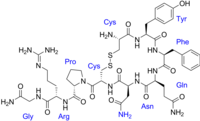
Weak effects of common genetic variation in oxytocin and vasopressin receptor genes on rhesus macaque social behavior
Sign Up to like & getrecommendations! Published in 2018 at "American Journal of Primatology"
DOI: 10.1002/ajp.22873
Abstract: The neuropeptides oxytocin (OT) and arginine vasopressin (AVP) influence pair bonding, attachment, and sociality, as well as anxiety and stress responses in humans and other mammals. The effects of these peptides are mediated by genetic… read more here.
Keywords: receptor genes; genetic variation; social behavior; variation ... See more keywords

The factor structure of the macaque social responsiveness scale‐revised predicts social behavior and personality dimensions
Sign Up to like & getrecommendations! Published in 2021 at "American Journal of Primatology"
DOI: 10.1002/ajp.23234
Abstract: Most primate species are highly social. Yet, within species, pronounced individual differences in social functioning are evident. In humans, the Social Responsiveness Scale (SRS) measures variation in social functioning. The SRS provides a quantitative measure… read more here.
Keywords: poor social; macaque social; social behavior; responsiveness scale ... See more keywords

Heritability of social behavioral phenotypes and preliminary associations with autism spectrum disorder risk genes in rhesus macaques: A whole exome sequencing study
Sign Up to like & getrecommendations! Published in 2022 at "Autism Research"
DOI: 10.1002/aur.2675
Abstract: Nonhuman primates and especially rhesus macaques (Macaca mulatta) have been indispensable animal models for studies of various aspects of neurobiology, developmental psychology, and other aspects of neuroscience. While remarkable progress has been made in our… read more here.
Keywords: heritability; autism; social behavior; rhesus macaques ... See more keywords

Oxytocin receptors are widely distributed in the prairie vole (Microtus ochrogaster) brain: Relation to social behavior, genetic polymorphisms, and the dopamine system
Sign Up to like & getrecommendations! Published in 2022 at "Journal of Comparative Neurology"
DOI: 10.1002/cne.25382
Abstract: Oxytocin regulates social behavior via direct modulation of neurons, regulation of neural network activity, and interaction with other neurotransmitter systems. The behavioral effects of oxytocin signaling are determined by the species‐specific distribution of brain oxytocin… read more here.
Keywords: brain; social behavior; oxytocin receptors; prairie vole ... See more keywords

Uncovering the brain‐wide pattern of synaptic input to vasopressin‐expressing neurons in the paraventricular nucleus of the hypothalamus
Sign Up to like & getrecommendations! Published in 2023 at "Journal of Comparative Neurology"
DOI: 10.1002/cne.25476
Abstract: Arginine vasopressin (AVP) is a neuropeptide critical for the mammalian stress response and social behavior. AVP produced in the hypothalamus regulates water osmolality and vasoconstriction in the body, and in the brain, it regulates social… read more here.
Keywords: vasopressin; brain; expressing neurons; social behavior ... See more keywords

Differences in the behavior and diet between shoaling and solitary surgeonfish (Acanthurus triostegus)
Sign Up to like & getrecommendations! Published in 2023 at "Ecology and Evolution"
DOI: 10.1002/ece3.9686
Abstract: Abstract Variation in behavior within marine and terrestrial species can influence the functioning of the ecosystems they inhabit. However, the contribution of social behavior to ecosystem function remains underexplored. Many coral reef fish species provide… read more here.
Keywords: shoaling solitary; triostegus; ecology; acanthurus triostegus ... See more keywords

Long-term impairment of social behavior, vocalizations and motor activity induced by bilateral lesions of the fastigial nucleus in juvenile rats
Sign Up to like & getrecommendations! Published in 2019 at "Brain Structure and Function"
DOI: 10.1007/s00429-019-01871-3
Abstract: The cerebellum is increasingly recognized to be involved in limbic and cognitive-associative functioning. Cerebellar cognitive affective syndromes may result from various types of injuries. Cerebellar mutism may occur in children after resection of midline tumors in… read more here.
Keywords: bilateral lesions; social behavior; motor; fastigial nucleus ... See more keywords

An Ecobehavioral Analysis of Social Behavior Across Learning Contexts in Kindergarten
Sign Up to like & getrecommendations! Published in 2020 at "Early Childhood Education Journal"
DOI: 10.1007/s10643-020-01103-y
Abstract: The purpose of the present study was to examine the opportunities kindergarten children in the United States had across different learning contexts (whole group, small group, center time, lunch, recess) to engage in social behavior… read more here.
Keywords: across learning; group; social behavior; learning contexts ... See more keywords

Normative goals and the regulation of social behavior: The case of respect
Sign Up to like & getrecommendations! Published in 2017 at "Motivation and Emotion"
DOI: 10.1007/s11031-017-9616-8
Abstract: The rational actor model has a long and successful history of explaining human motivation across several disciplinary fields, but its focus on material self-interest fails to explain the many courtesies that people extend to each… read more here.
Keywords: goals regulation; pro social; respect; social behavior ... See more keywords

Robot life: simulation and participation in the study of evolution and social behavior
Sign Up to like & getrecommendations! Published in 2018 at "History and Philosophy of the Life Sciences"
DOI: 10.1007/s40656-017-0181-y
Abstract: Abstract This paper explores the case of using robots to simulate evolution, in particular the case of Hamilton’s Law. The uses of robots raises several questions that this paper seeks to address. The first concerns… read more here.
Keywords: philosophy; social behavior; simulation; robot life ... See more keywords

Influence of rearing environment on the development of social behavior in male water voles (Arvicola amphibius)
Sign Up to like & getrecommendations! Published in 2021 at "Mammalian Biology"
DOI: 10.1007/s42991-021-00170-x
Abstract: In litter-bearing mammals, the prenatal and postnatal environments are crucial for developing social behaviors, which help individuals survive and reproduce. Here, we hypothesized that the social behavior of adult water vole [Arvicola amphibius (Linnaeus, 1758)]… read more here.
Keywords: body mass; litter; arvicola amphibius; water ... See more keywords